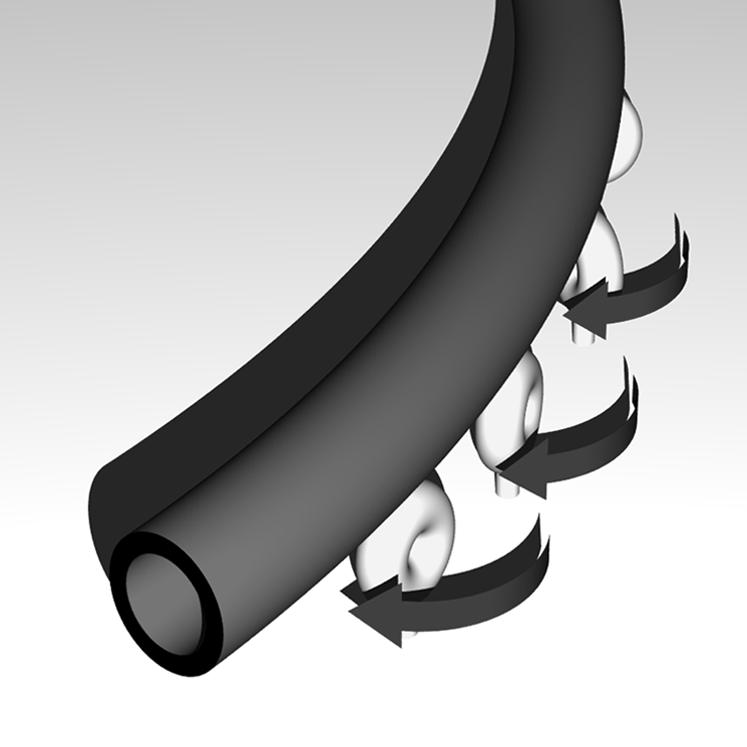FIGURE 5.

Model to explain the right-handed microtubule circling on a dynein-coated surface. All dyneins are assumed to generate torque, but in the middle of a microtubule, the torque is canceled out by the presence of other dyneins bound to the microtubule. Only the dyneins interacting with the advancing front of the microtubule can bend it to the right. The leading end of the microtubule is bent each time it encounters a dynein; thus, the microtubule advances on a curved track. The trailing part of the microtubule is also curved because it remains associated with the dynein molecules that previously interacted with the plus-end portion of the microtubule and bent it. These dyneins are also producing torque but not bending the microtubule.
